The Longest 40 Yards: How a short sprint became the combine's marquee event

One time in 1963 or ’64—Gil Brandt can’t exactly pinpoint which—the Cowboys were in Jacksonville working out a prospect, but the weather was terrible. The rain in Florida had made it impossible to run a legitimate 40-yard dash on one of the few football fields available, so they had to get creative. The Cowboys and the prospect went to Jacksonville’s airport, cleared out a corridor and timed his 40 there.
Brandt ran guys in their dorms. He ran them in hotel hallways. Cowboys scouts used to carry a 40-yard wash line with them on trips so that they wouldn’t have to measure a foreign field.
Next week in Indianapolis, more than 300 of the top NFL prospects will run the 40-yard dash at the NFL scouting combine. Scouts from every team will be present, and the many of the runs will be broadcast live on NFL Network. The players will be timed by a laser at the 10-, 20- and 40-yard lines. A few hundredths of a second could be worth hundreds of thousands of dollars.
“It’s become a universal way of doing things,” said Brandt, the long-time personnel man for the Cowboys. “It’s like zip codes and postal mailings and area codes. It’s a part of life.”
NFL Big Board 4.0: Ranking the top 50 prospects ahead of the combine
Brandt didn’t invent the 40, but he popularized it as the modern-day scouting tool for speed. Today it’s the seminal event at the combine, a rather boring event that’s more about medicals and interviews than on-field drills and speed tests. But the 40 is forever. Chris Johnson’s 4.24 40 in 2008 remains the modern-day benchmark.
Deion Sanders ran a 4.27 in 1989. Bo Jackson holds the mythical record of 4.12 from 1986, though debate continues on whether that was an accurate time. Different evaluators and clubs place varying importance on the 40, but the old axiom remains true.
You can’t teach speed.
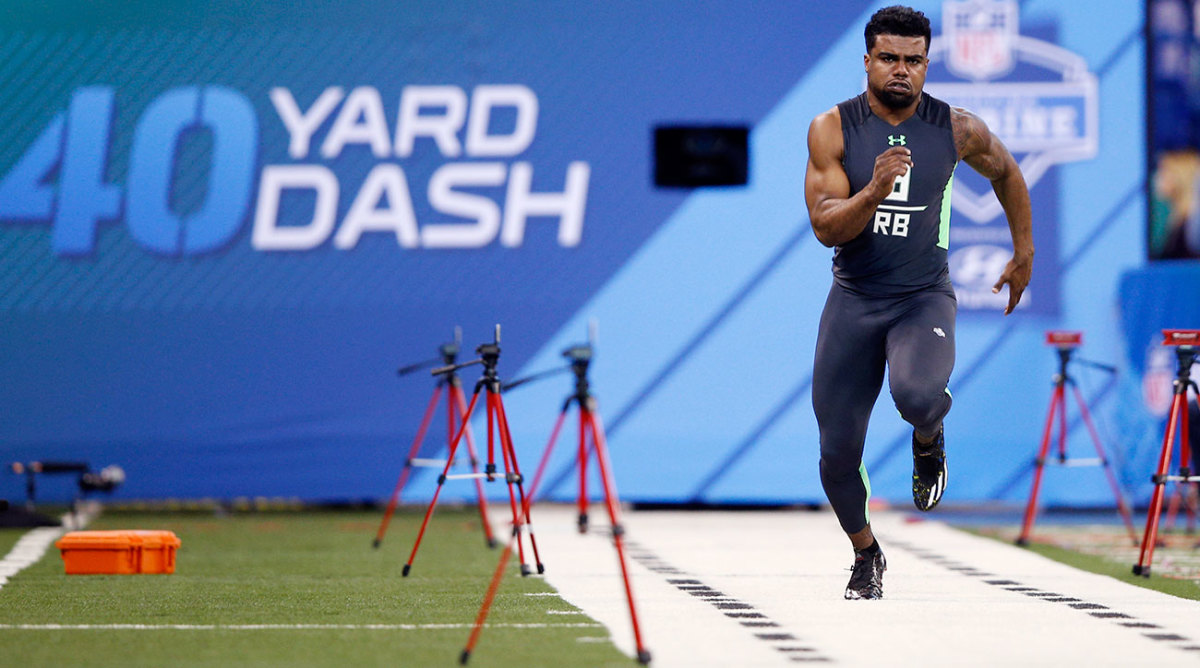
Paul Brown couldn’t have envisioned all of this when he invented the 40-yard dash in the ’50s. From the millions watching on TV to the laser times and the training facilities that agents spend tens of thousands on in which to train their clients—he just wanted a tiebreaker to figure out who could cover a punt.
Brandt joined the Cowboys upon their founding in 1960 as the vice president of player personnel, and some time in the early ’60s he and the team adopted the 40-yard dash as a uniform way of assessing players’ speed. Some schools would have their players’ times in the 100, and others would have them at the 50.
Why 40? He still isn’t sure, but it quickly became the norm. Dallas was on the front end of the comparative analysis curve in the NFL, which helped the Cowboys to five NFC titles and two Super Bowl titles by 1978. Dallas would send staffers to schools with a stopwatch and a bathroom scale to get their own times and weights. Back then—and even today—you couldn’t always trust the schools to give you accurate numbers. In 1971, Brandt was at Ohio State when he timed defensive back Tim Anderson at a 4.72 40. Apparently San Francisco had a much faster time for Anderson, and the 49ers drafted him in the first round that year. Dallas coach Tom Landry wanted answers.
“Coach Landry came to me with his arms folded and said, ‘Are you sure you know how to time?’ I said, ‘Coach, I don’t know if I know how to time but I know I was the only one there,’” Brandt recalls. “Turns out my time was wrong. He was even slower than I had timed him in. He ran like a 4.8 or 4.79 or something like that.” Anderson played just two seasons in the NFL.
Panthers general manager Dave Gettleman hasn’t missed a combine since 1986, one year after all 28 NFL teams got on board with the event.
In the early years, prospects ran slower 40s than expected, and scouts later learned it was because the players had been testing quad strength on the Cybex machine the previous night. (The combine doesn’t use the Cybex anymore.) One of the greatest early combine stories came courtesy of Florida State’s Deion Sanders in 1989. There was talk pre-combine that Sanders wouldn’t run the 40 at all; he later said he would take his medicals, run his 40 and go home.
“Deion gets up to the line and runs his first 40 and everyone has him at 4.3. We figured he was done. He gets up and runs another one, and he runs even faster,” said Gettleman, then a scout for the Bills. “Some people had him at 4.25 [officially a 4.27]. And the funniest damn thing about it was he finishes the 40, continues to run, waves to everybody, goes right through the tunnel and we don’t see him again. We all got up and gave him a standing ovation because so many of those guys wouldn’t run.”
The 40 can mean different things for different positions. There’s been debate about whether offensive and defensive linemen should run the 40, but some teams use that data when evaluating a player’s athleticism. The 10- and 20-yard splits are far more important in the evaluation process for those two groups.
2017 NFL draft rankings: Top prospects by position
Game speed and straight-line speed are two different things, too. Jerry Rice ran a 4.71 40, but the greatest receiver of all time couldn’t be caught in the open field. Jarvis Landry ran a 4.77 in 2014 and has put together consecutive 1,100-yard seasons. But a 4.6 receiver and a 4.6 cornerback aren’t created equally. Larry Fitzgerald can do just about anything on the field, but a 4.6 corner can’t cover a go route no matter how good his ball skills are.
“There are certain things that 40-yard dash times will tell you. You look at your defensive ends and if they run 4.8 or slower and, referring to sack production, history will tell you they’re not going to be big sack guys in the NFL,” Gettleman said. “Same thing for offensive linemen. I’m a believer that the 40-yard dash time is an indicator. I’m not saying you live and die with it. If they’re 5.4 or 5.5, that’s an indicator that they won’t have the foot speed to play out there on that island.”
Jeff Foster was a scout with the Chiefs before becoming the president of National Football Scouting, which oversees the combine. Next week will mark his 12th year in charge of the combine, and he knows what talent evaluators are looking for. On average, he estimates, 90% of the prep work on an athlete is done before the combine because scouts have been watching that player for the past two years.
The 40 can help with some unique situations, though. Maybe a guy played out of position, like a defensive end in college who’ll be an outside linebacker in the pros. Or perhaps he played on a lower level and it’s difficult to properly evaluate his speed on tape because of the competition level.
Sometimes you can explain away a slower 40, but a fast 40 never hurts.
• BREER: Why A.J. Bouye is free agency’s king | KAPLAN: The guy taken before Brady
“I think you can look back at any draft, and not just at the combine but pro days, and all of a sudden somebody runs a really fast time, like 4.2 something, and all of a sudden that player is getting drafted higher than he was projected the month before,” Foster said. “If you’re going to take a flyer in the draft on something, you’re going to bet on speed before you bet on something else.”
That’s why getting the time exactly right is paramount. The combine’s electronic timing device features a manual start with an electronic finish. Unlike a track meet, players leave their stationary position when they’re ready, but they’re instructed not to roll into the start because the timer begins on their first movement.
The combine places a man at the six-yard line, and he triggers the timer at first movement. Lasers take the times from the 10-, 20- and 40-yard lines for the combine’s official times. It’s important to get the starter as close as possible to the player at the beginning of the run, hence the six-yard-line, rather than have him stand at the finish line.
“If you think about it in terms of biomechanics, you see a guy, your brain tells your finger to push the button,” Foster said. “Well if you’re 40 yards away, it’s going to take that much longer—and we’re talking about hundredths and thousandths of seconds—but as you know that can mean the difference in a game.”
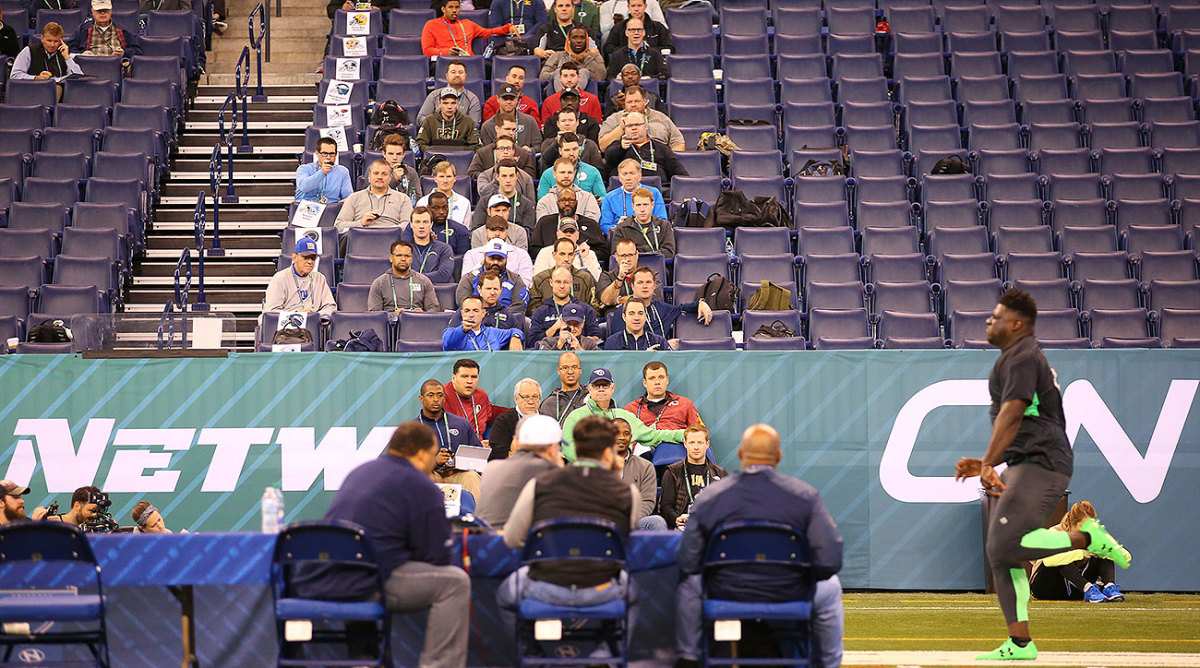
Two industries have grown significantly in connection to the combine. First: The NFL's off-season news cycle. The media presence at the combine has increased exponentially, from almost nonexistent two decades ago to more than 1,300 credentialed media members last year. The other, far more profitable industry is combine-specific training.
There are people—namely, agents—who will argue that either you can run or you can’t, and that a training facility that rings up a bill in the five figures isn’t worth the cost. But facilities across the country have carved out a niche market based entirely off training athletes from the first day after a bowl game to the week before their Indianapolis trip.
EXOS training facility, based in Phoenix and founded in 1999, is the industry leader. EXOS boasts that seven of the top 10 times from last year’s combine came from athletes that were in their program.
Roy Holmes is the performance manager at the San Diego facility, where he’s been training athletes for the combine for six years. Because the combine can be as much about medicals and character as it is on-field performance, Holmes places greater emphasis on getting players healthy and teaching them interview techniques than 40 training.
Holmes tells the players when they get to the facility that they’re about the run the slowest 40 of their lives. First, they probably have no technical know-how. Secondly, they’re weak having just finished their season. And finally, they’re in football shape, which is totally different than the kind of training shape they need to be in to perform at a top level.
Holmes breaks the 40 down into three categories. They inspect players to see if they have any movement restrictions: bad hips or bad ankles, poor posture or stability. The first order of business is to clean that up. Next are the technical aspects of how to run fast in a straight line, which is taught in track and field but obviously not in football. And lastly, how and when to apply force and power into the ground.
Think of it like streetracing. If you gas the car too much at the beginning, you could redline. But once you reach your max, you need to shift into another gear to maintain that power.
“Oftentimes guys will think the faster they move their legs in the beginning, the faster they’re actually traveling,” Holmes said. “You want to take the least amount of steps possible in a short amount of distance. If I’m taking 20-some odd steps and that’s resulting in me running a 4.5, now I can get it down to 16 steps but now I’m running a 4.4. That’s something that’s drastically different.”
Scouts know that combine prep is as good as it’s ever been. It’s possible—and in many cases likely—that next week in Indianapolis will be the last time most of those players run the 40 again. Maybe the players are gaming the system with help from these training facilities, but no talent evaluator has wool over his eyes.
“Everybody knows what the tests are going to be, so everybody prepares for them,” Gettleman said. “If I’m taking a math test, I’m not studying English.”
The 2017 NFL combine's biggest snubs
1. Zach Terrell, QB, Western Michigan
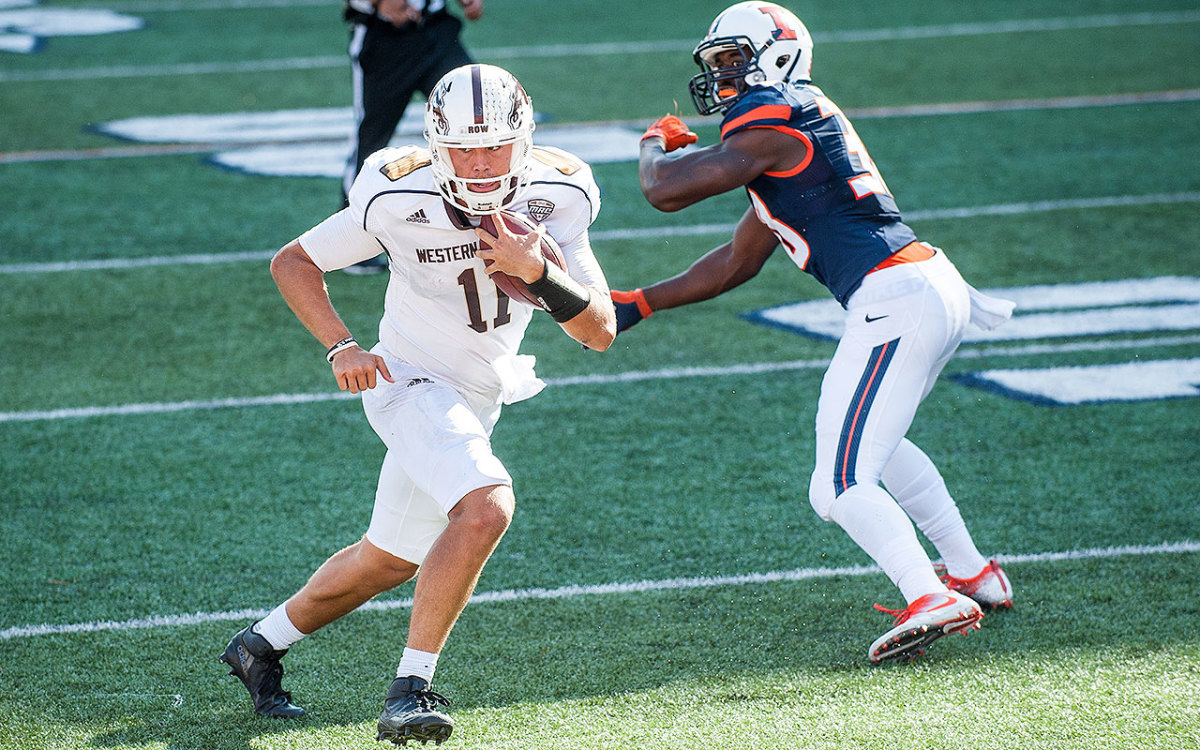
One of several notable quarterbacks left off the combine list—Penn’s Alek Torgersen and Tiffin’s Antonio Pipkin also missed out, while Chad Kelly’s off-field record likely kept him from an invite—Terrell finished 2016 with 33 TDs to just four INTs, then participated in the East-West Shrine Game.
2. Joe Yearby, RB, Miami
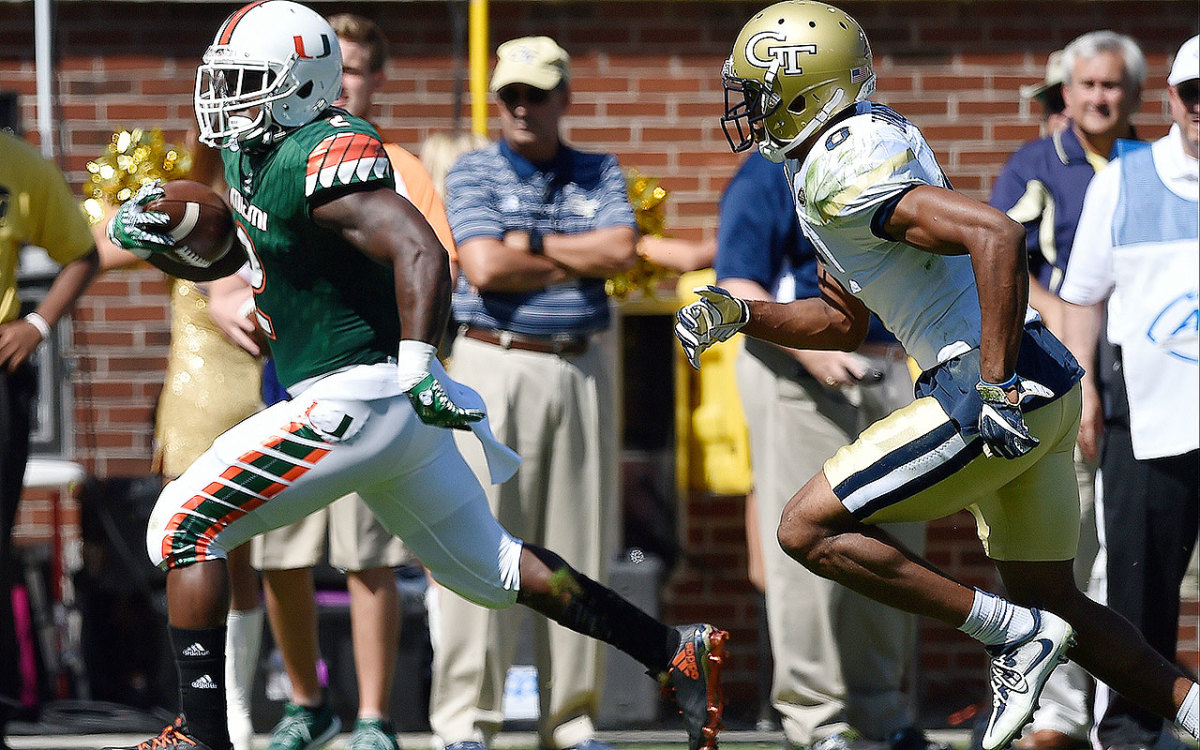
Given the depth of this year’s RB class, it was inevitable a few names would be squeezed out of the combine. Yearby, Baylor’s Shock Linwood and Middle Tennessee State’s I’Tavius Mathers are among the draftable talents missing. The Miami product rushed for 1,000 yards in 2015, then averaged 6.0 yards per carry in more of a part-time role this past season.
3. Austin Carr, WR, Northwestern
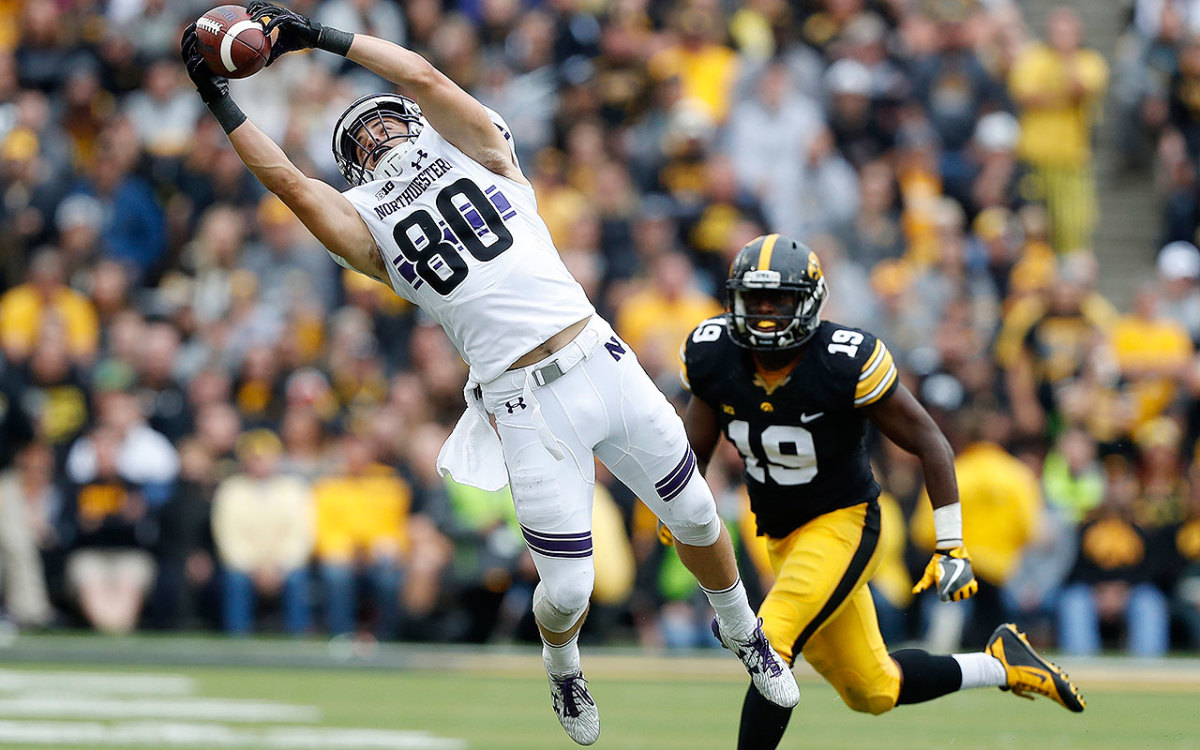
The Big Ten’s Receiver of the Year will not be in Indianapolis, despite a 90-catch, 1,247-yard season. His absence may not hurt him in the long run—he probably would not have tested off the charts; he’s more technician than eye-popping athlete. He’ll be in an NFL camp even if the league didn’t want him for the combine.
4. Josiah Price, TE, Michigan State
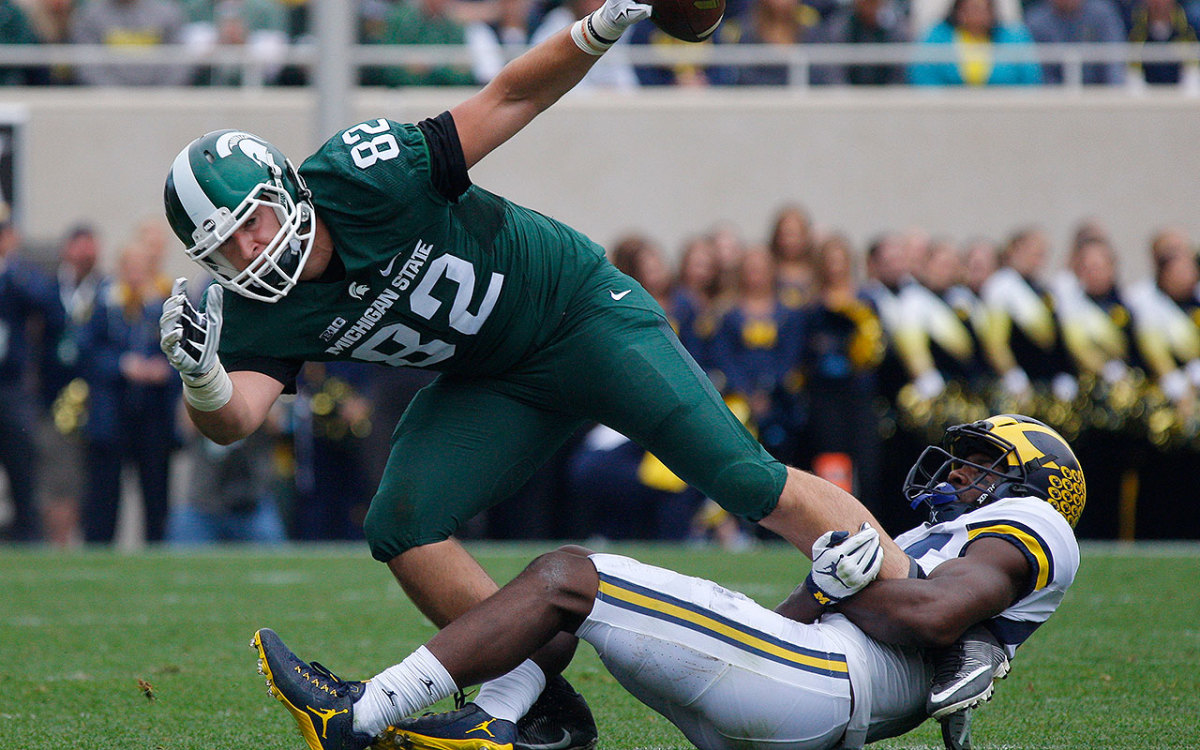
He’s not the mismatch-creating tight end that others at his position are, but Price still caught 21 career touchdown passes for the Spartans. He’s also well-versed as a blocker, which should help draw him NFL looks.
5. Storm Norton, OT, Toledo
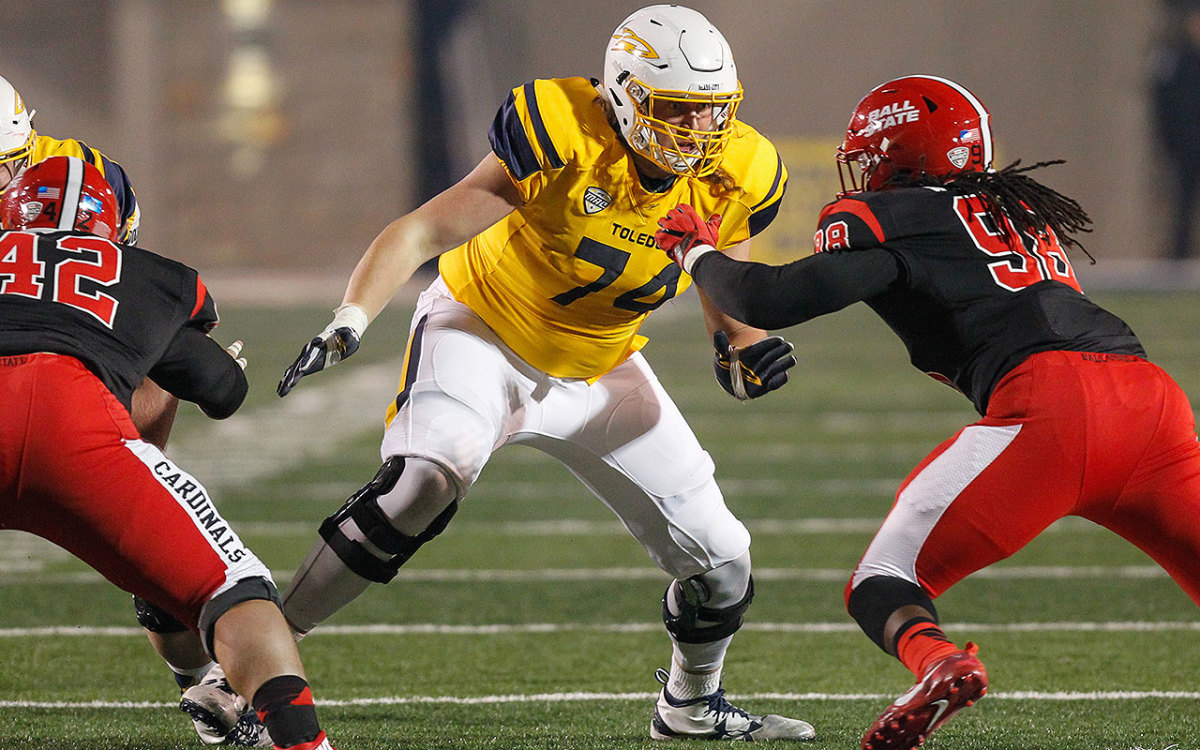
A two-year starter and first-team All-MAC honoree, Norton stands 6' 8", making him among the tallest players available in this year’s draft. (William & Mary's Jerry Ugokwe, 6' 9", will be at the combine.) Norton uses that length to get out in front as a run blocker—just ask Toledo RB and fellow ’17 draft hopeful Kareem Hunt, who piled up a lot of yards thanks to Norton’s work.
6. Hunter Dimick, DL, Utah
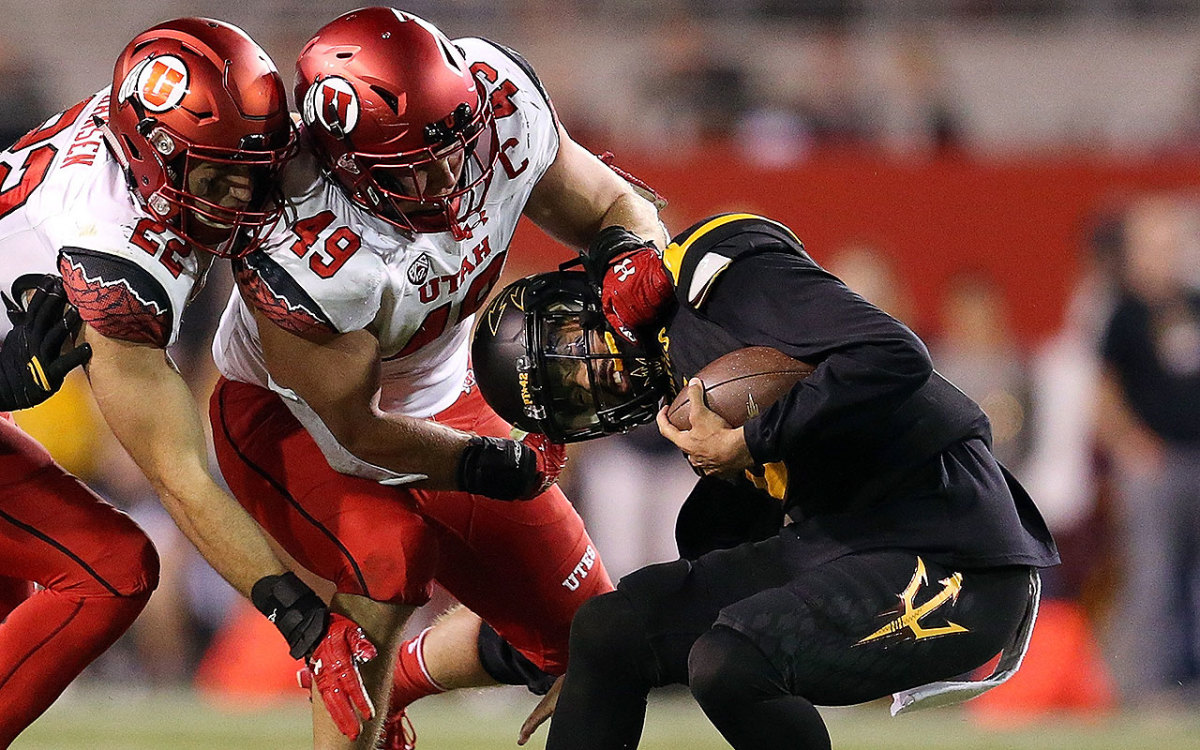
Dimick ranked third in the country and first in the Pac-12 with 13.5 sacks this season. He had 28.5 (and 42.5 tackles for loss) during his four-year Utah career. Dimick is a high-motor player who was among the best prospects invited to this season’s Shrine Game. Given the level of competition, his production alone makes it a surprise Dimick didn’t get a combine invite.
7. Elijah Lee, LB, Kansas State
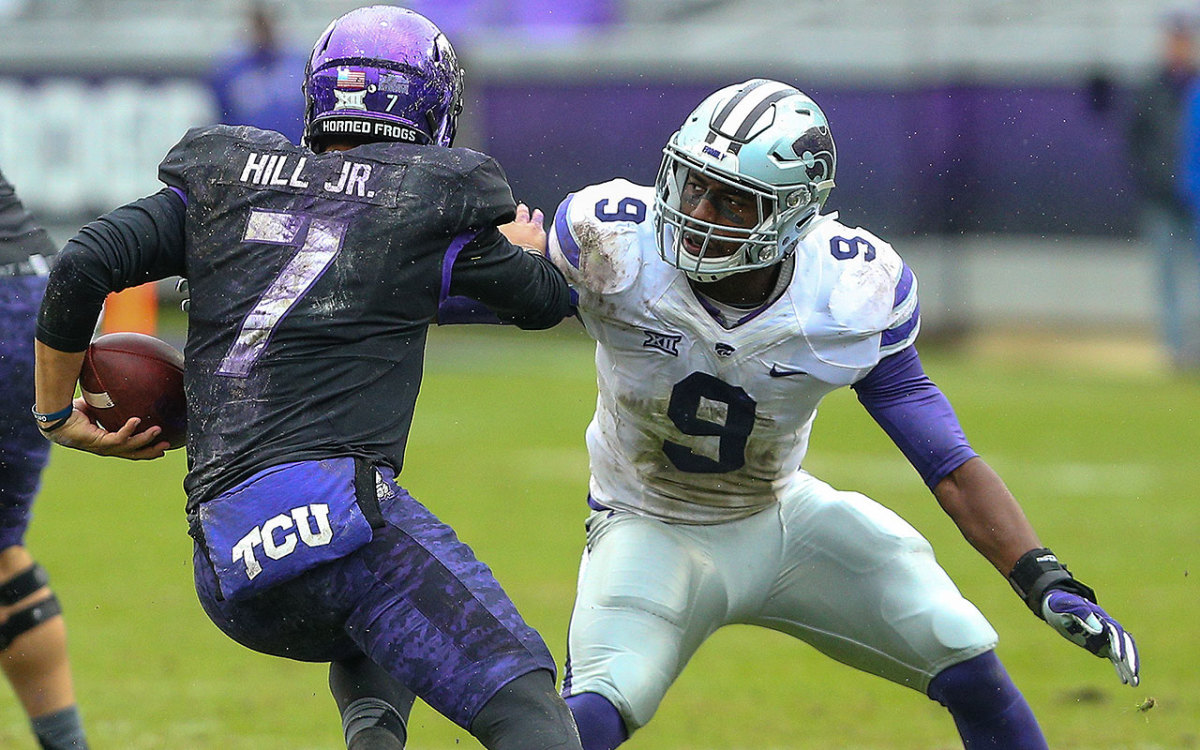
Arguably the most glaring combine snub. Lee bypassed his final season of eligibility after racking up 110 tackles in 2016, but he’ll have to prove his worth without a stop in Indianapolis. His speed, both in run defense and coverage, would seem to make him a good fit for the modern NFL.
8. Jeremy Cutrer, CB, Middle Tennessee State
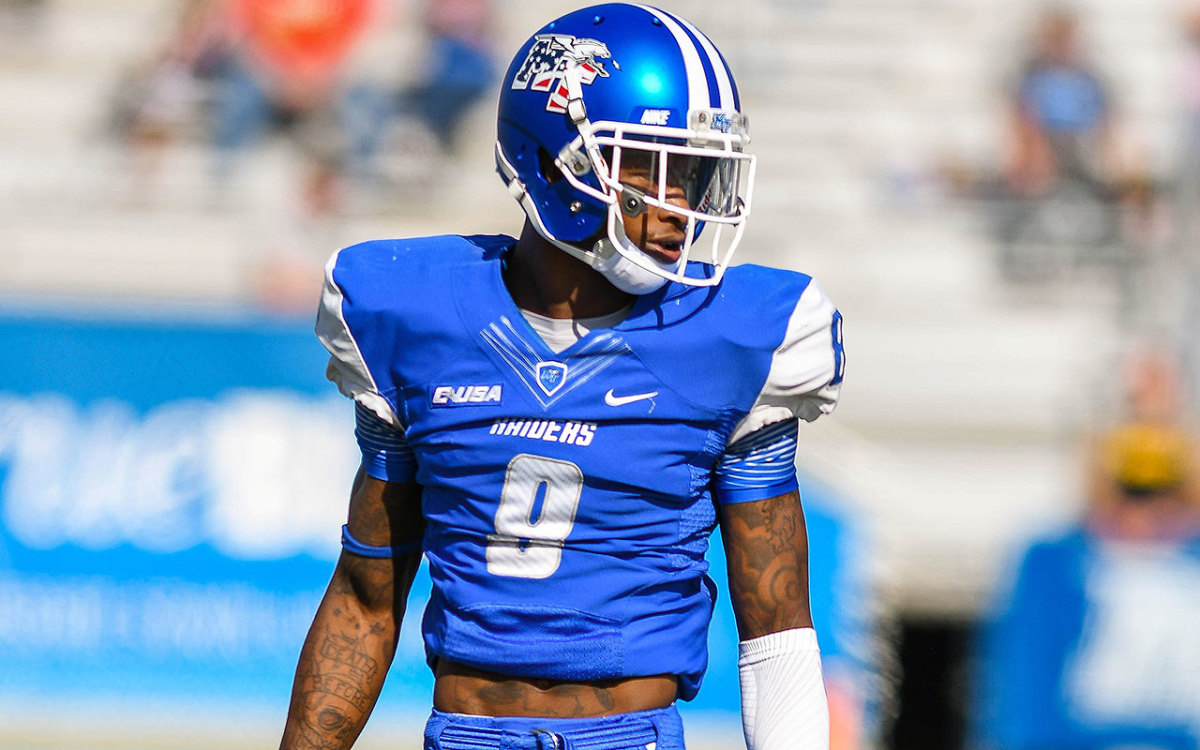
It’s possible this was injury-related—Cutrer had to sit out the Shrine Game, reportedly due to foot surgery. Still, the combine always includes a long list of players unable to participate in all drills due to lingering health concerns, so Cutrer easily could have made the trip anyway. He’s a tall, lanky CB (6’ 2”, 170 pounds) with a nose for the ball (22 combined pass breakups in 2015–16).
9. Fish Smithson, S, Kansas
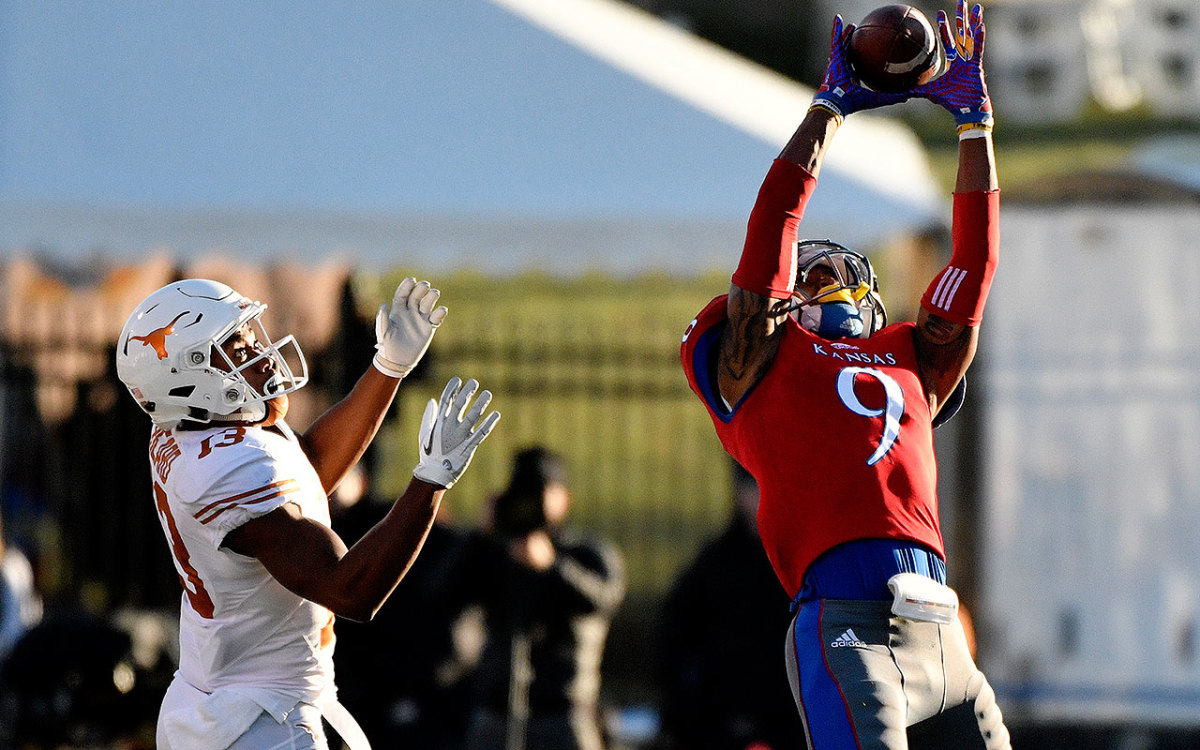
There is safety talent to be had beyond those who will be at the combine—Smithson, Oklahoma State’s Jordan Stearns and Air Force’s Weston Steelhammer, for starters, all deserve NFL looks. Smithson is a better player than he is an athlete, with the game to help either in deep coverage or pulled up in the box.
10. Nick Weiler, K, North Carolina
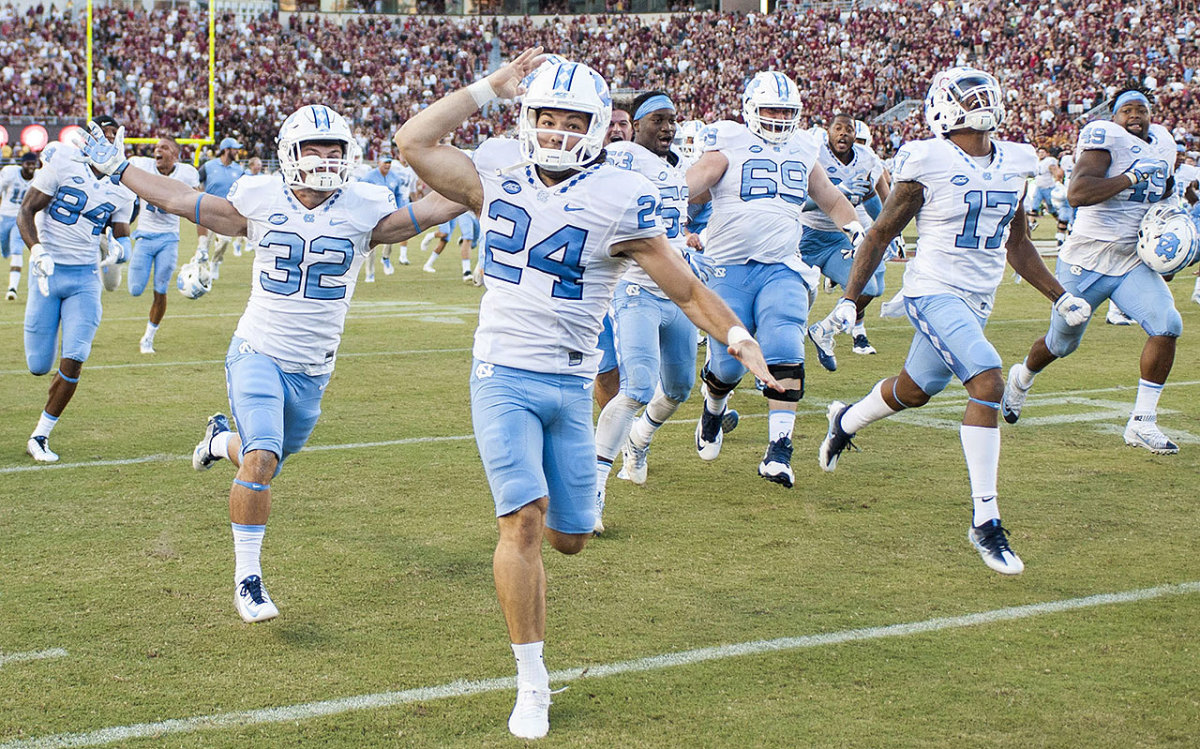
Hey, kickers can be snubs! You might remember Weiler for his tomahawk chop celebration after drilling a 54-yarder to beat Florida State. He did not build on that moment with a great season (15 of 21 on field goals), but he was 7 of 10 from beyond 40 yards (3 of 5 from 50-plus). Four kickers, five punters and two long snappers are headed to the combine.
Chris Johnson had a breakout senior year at East Carolina, rushing for 1,423 yards and averaging six yards per carry in 2007. But he wasn’t considered a first-round talent until he clocked a 4.24 in the 2008 combine.
“You’re in a [TV production] truck, so at a certain point all sprints all look alike,” said NFL Network’s Charlie Yook, “but when Chris ran it was, Oh. We kind of knew it was something special.”
NFL Network launched in 2003 and the following year began exclusively broadcasting live from the combine. Yook is now the senior coordinator producer at the network and oversees its combine and draft coverage. It’s his job to provide context to an event that involves hundreds of 22-year-olds running drills in spandex.
Foster likes to joke with the network that it should win a sports Emmy for turning the combine into an exciting, watchable television event. And Yook understands that—just like the 100-meter dash, swimming and gymnastics at the Summer Olympics—the 40-yard dash is the marquee event.
When LSU’s Leonard Fournette runs the 40 on Friday, Yook’s team will have last year’s tape of Ezekiel Elliott cued up and ready to compare. NFL Network analyst Mike Mayock will interpret Fournette’s time and explain how it should translate to the field.
In recent years, NFL Network has used “simulcams” for the 40s. If you’ve watched a combine in the past three years, you’ve seen them. Simulcams match up a handful of players by position and, in one screen, show these shadowy, silhouetted figures running against one another. This year Yook will borrow from NASCAR and horse racing and have bubbles floating above the player to separate them.
“This year we plan on a clearer picture with bubbles, or flags, that will show who’s who,” Yook said. “So instead of showing RG3, Cam [Newton], Andrew Luck and let’s say Deshaun Watson in those shadowy moments, the picture should be a little bit clearer with identifiers floating above them to let the viewer know who’s who. It can be confusing at times when they’re so close, especially regarding speed.”
Network cameras can’t follow players into their interviews with teams or to the MRI room, so the televised event has to be focused on the field. Coverage begins Friday at 9 a.m., and the first event of the day is the 40-yard dash for running backs and offensive linemen. Just like golf coverage, the NFL Network will show the top players’ 40s live, and if something happens when they go to commercial they’ll show a replay.
Mayock and the crew will try their best to contextualize the on-field drills and explain the importance of offensive linemen flipping their hips or the release point for quarterbacks. But there’s only one drill that transcends football knowledge.
“The one thing the viewer can relate to—if they don’t know what the shed and stack drill is, or they don’t know what the gauntlet is—they know a fast guy when they see it. They know what speed is. That in itself almost makes it, the reason why everyone gravitates to it is they know what it is. By just seeing it, they know.”
